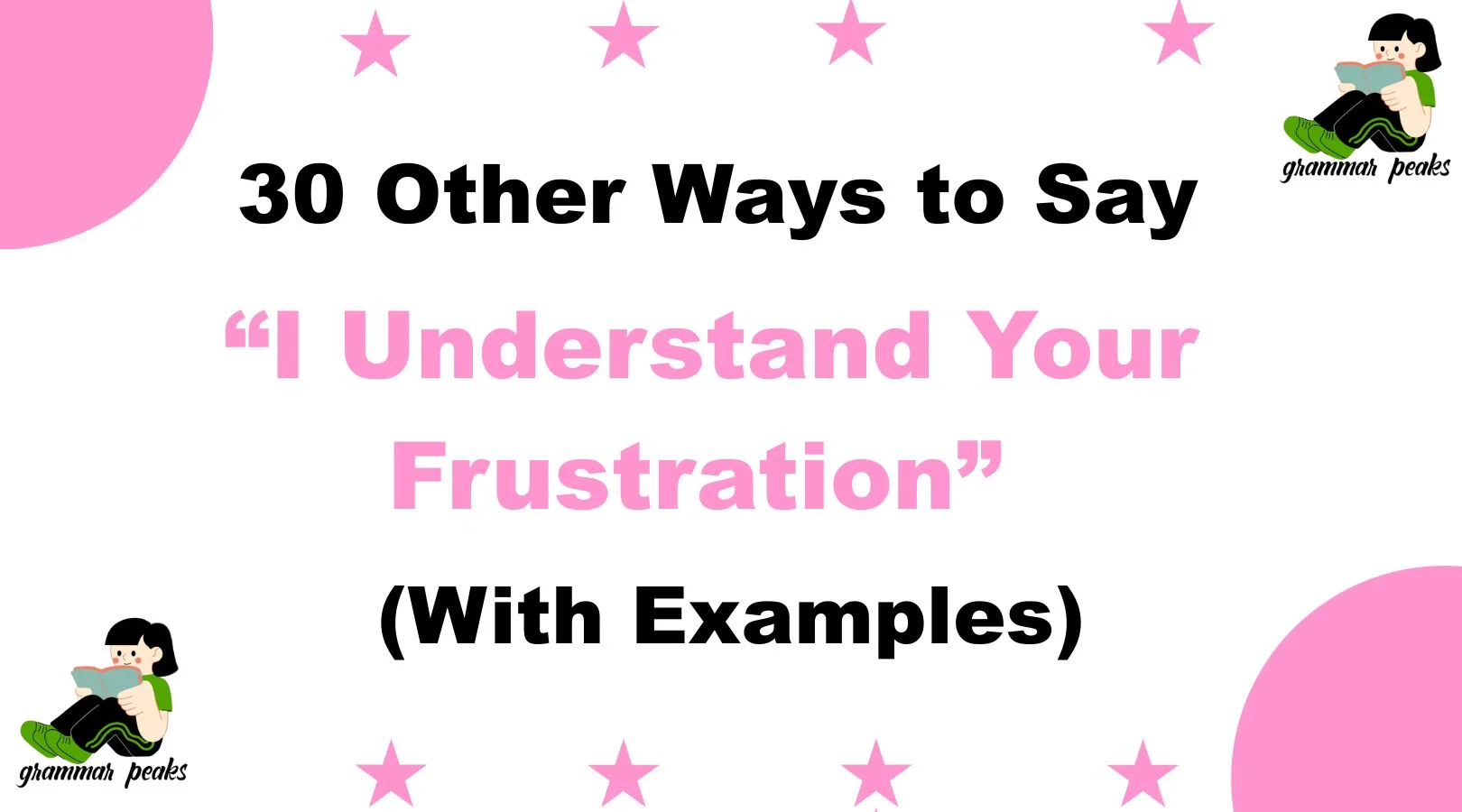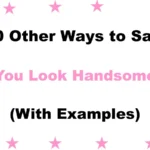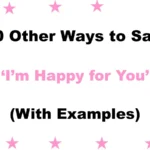In moments of tension or disappointment, acknowledging someone’s emotions—especially frustration—is one of the most powerful things you can do. Saying “I understand your frustration” is a respectful way to show empathy, but it can sound repetitive or too formal depending on the situation. That’s why having a variety of compassionate and emotionally intelligent alternatives helps your communication feel more personal, thoughtful, and sincere. Below are 30 meaningful ways to express that understanding, with examples and usage tips for each.
What Does “I Understand Your Frustration” Mean?
“I understand your frustration” means you recognize that someone is upset, irritated, or emotionally affected by a situation, and you’re validating those feelings. It’s an empathetic statement meant to show support, not necessarily agreement.
When to Use “I Understand Your Frustration”
Use this phrase when someone is expressing disappointment, anger, or stress—especially if you’re in a position to offer support, resolve an issue, or simply listen. It’s useful in customer service, workplace conflict resolution, personal relationships, and even in therapy or coaching settings.
Is It Professional or Polite to Say “I Understand Your Frustration”?
Yes—this phrase is both professional and polite. It’s widely used in business and customer service settings as a way to show emotional intelligence and acknowledge concerns without escalating the situation.
Pros and Cons of Saying “I Understand Your Frustration”
Pros:
- Empathetic and validating
- De-escalates emotional tension
- Builds trust and rapport
Cons:
- Can sound generic or robotic if overused
- Might seem dismissive if no action follows
- Lacks specificity without further elaboration
Synonyms For I Understand Your Frustration”
- I Hear You, and I Get Why You’re Upset
- That Sounds Really Frustrating
- I Can See Why That Would Upset You
- You’re Totally Justified in Feeling That Way
- I Know This Must Be Difficult for You
- That Would Frustrate Anyone
- I Can Imagine How Upsetting That Must Be
- I Know This Isn’t Easy
- I’m With You on This
- That’s Completely Understandable
- I Can Relate to What You’re Feeling
- I Get It—That’s Really Tough
- You’re Not Alone in Feeling That Way
- That Must Have Been So Frustrating for You
- It’s Okay to Feel Frustrated
- I Can Tell This Is Bothering You
- I Know That Didn’t Go the Way You Hoped
- This Is Clearly Important to You
- I’m Sorry You’re Having to Deal With This
- Your Feelings Make Perfect Sense
- Thanks for Being Honest About That
- You’re Right to Feel Upset
- I Would Feel the Same in Your Shoes
- That Wasn’t Fair to You
- Let’s Work Through This Together
- I’m Here to Help However I Can
- Let’s See What We Can Do to Make This Right
- That Situation Was a Mess—No Wonder You’re Upset
- You Deserve Better Than That
- Thanks for Being Patient—Let’s Figure This Out
1. I Hear You, and I Get Why You’re Upset
Definition: You’re acknowledging both the message and the emotion.
Explanation: This is a more conversational and validating alternative.
Example: “I hear you, and I get why you’re upset—it would frustrate me too.”
Best Use: Customer support, coaching, personal conversations.
Worst Use: Formal settings.
Tone: Warm, understanding.
2. That Sounds Really Frustrating
Definition: You’re identifying the emotion from what they described.
Explanation: Helps them feel heard without minimizing their experience.
Example: “That sounds really frustrating—I’m sorry you had to deal with that.”
Best Use: Empathetic listening moments.
Worst Use: When they’re seeking solutions, not just empathy.
Tone: Compassionate, gentle.
3. I Can See Why That Would Upset You
Definition: Acknowledges the logic behind their emotion.
Explanation: Good for showing perspective-taking.
Example: “I can see why that would upset you—it was unfair.”
Best Use: Disputes, miscommunications.
Worst Use: When emotions are still too raw.
Tone: Calm, respectful.
4. You’re Totally Justified in Feeling That Way
Definition: Full validation of their emotional reaction.
Explanation: Reassures them their feelings aren’t “too much.”
Example: “You’re totally justified in feeling that way—I’d be frustrated too.”
Best Use: Supportive friend or mentor role.
Worst Use: When accountability or action is needed.
Tone: Affirming, empathetic.
5. I Know This Must Be Difficult for You
Definition: Shows empathy without judgment.
Explanation: Centers their emotional experience with kindness.
Example: “I know this must be difficult for you. Let’s work through it together.”
Best Use: One-on-one personal or emotional conversations.
Worst Use: Corporate or public statements.
Tone: Gentle, nurturing.
6. That Would Frustrate Anyone
Definition: Normalizes their emotional response.
Explanation: Helps them feel their reaction is valid and not overblown.
Example: “Honestly, that would frustrate anyone—you’re not overreacting.”
Best Use: Calming someone down, offering solidarity.
Worst Use: When they want specific help or action.
Tone: Reassuring, casual.
7. I Can Imagine How Upsetting That Must Be
Definition: You’re placing yourself in their shoes.
Explanation: Expresses sincere empathy and perspective-taking.
Example: “I can imagine how upsetting that must be after all your effort.”
Best Use: Emotional conversations, team support.
Worst Use: High-stakes executive meetings.
Tone: Empathetic, thoughtful.
8. I Know This Isn’t Easy
Definition: Acknowledges their emotional burden.
Explanation: Works when someone is trying hard but struggling.
Example: “I know this isn’t easy, and I appreciate you talking through it.”
Best Use: Performance reviews, emotional support.
Worst Use: Minor or casual annoyances.
Tone: Kind, understanding.
9. I’m With You on This
Definition: You’re emotionally aligned with them.
Explanation: Shows solidarity without needing lots of words.
Example: “I’m with you on this—it’s just not right.”
Best Use: Peer discussions, showing shared frustration.
Worst Use: When neutrality is expected.
Tone: Supportive, informal.
10. That’s Completely Understandable
Definition: Validates their emotional reaction.
Explanation: Useful in both professional and personal conversations.
Example: “Your frustration is completely understandable—we dropped the ball.”
Best Use: Apologies, customer recovery.
Worst Use: Sarcastic situations.
Tone: Respectful, calm.
11. I Can Relate to What You’re Feeling
Definition: Expresses shared emotional experience.
Explanation: Powerful when you’ve gone through something similar.
Example: “I can relate to what you’re feeling—I’ve been there.”
Best Use: Mentorship, coaching, conflict resolution.
Worst Use: When your experience overshadows theirs.
Tone: Honest, personal.
12. I Get It—That’s Really Tough
Definition: Casual but sincere acknowledgment.
Explanation: Perfect for quick emotional validation.
Example: “I get it—that’s really tough. Let’s figure out what we can do.”
Best Use: Informal chats, workplace stress.
Worst Use: Formal settings.
Tone: Relatable, kind.
13. You’re Not Alone in Feeling That Way
Definition: Reassures them that others share their emotions.
Explanation: Helps reduce emotional isolation.
Example: “You’re not alone in feeling that way—we all struggled with it.”
Best Use: Team support, group discussions.
Worst Use: When their issue is unique and needs individual attention.
Tone: Comforting, inclusive.
14. That Must Have Been So Frustrating for You
Definition: Emotional validation with personal focus.
Explanation: More intimate and person-centered.
Example: “That must have been so frustrating for you—especially after all your work.”
Best Use: Close relationships, one-on-one meetings.
Worst Use: Group settings.
Tone: Empathetic, personal.
15. It’s Okay to Feel Frustrated
Definition: Gives permission for emotional expression.
Explanation: Helps people feel seen and not judged.
Example: “It’s okay to feel frustrated—your feelings are valid.”
Best Use: Emotional regulation, parenting, leadership.
Worst Use: Legal or HR statements.
Tone: Gentle, affirming.
16. I Can Tell This Is Bothering You
Definition: Observational empathy.
Explanation: Lets them know you notice their emotional state.
Example: “I can tell this is bothering you—want to talk more about it?”
Best Use: One-on-one support.
Worst Use: If the person is trying to hide emotions.
Tone: Attuned, empathetic.
17. I Know That Didn’t Go the Way You Hoped
Definition: Acknowledges disappointment and unmet expectations.
Explanation: Keeps focus on their hopes rather than just anger.
Example: “I know that didn’t go the way you hoped—it’s okay to be frustrated.”
Best Use: After failed efforts or outcomes.
Worst Use: When a win is being celebrated.
Tone: Honest, soft.
18. This Is Clearly Important to You
Definition: Focuses on the values behind their frustration.
Explanation: Shows you respect what matters to them.
Example: “This is clearly important to you—I’ll make sure it gets addressed.”
Best Use: Client care, team leadership.
Worst Use: When it feels dismissive or overly scripted.
Tone: Validating, sincere.
19. I’m Sorry You’re Having to Deal With This
Definition: Expresses regret for their situation.
Explanation: Offers sympathy without blame.
Example: “I’m sorry you’re having to deal with this. It shouldn’t have happened.”
Best Use: Customer service, conflict support.
Worst Use: When you’re directly responsible and need to be more accountable.
Tone: Apologetic, compassionate.
20. Your Feelings Make Perfect Sense
Definition: Normalizes and validates their reaction.
Explanation: Removes emotional self-doubt.
Example: “Your feelings make perfect sense—this situation has been chaotic.”
Best Use: Emotional coaching, therapy, de-escalation.
Worst Use: Sarcastic or passive-aggressive contexts.
Tone: Supportive, calm.
21. Thanks for Being Honest About That
Definition: Appreciates emotional openness.
Explanation: Encourages vulnerability and trust.
Example: “Thanks for being honest about that. I know it’s not easy.”
Best Use: Team management, performance talks.
Worst Use: When their frustration is aggressive or accusatory.
Tone: Grateful, professional.
22. You’re Right to Feel Upset
Definition: Validates their judgment of the situation.
Explanation: Adds credibility to their emotions.
Example: “You’re right to feel upset—this was poorly handled.”
Best Use: Accountability situations.
Worst Use: When trying to stay neutral.
Tone: Affirming, strong.
23. I Would Feel the Same in Your Shoes
Definition: A direct expression of shared perspective.
Explanation: Builds connection and empathy.
Example: “Honestly, I would feel the same in your shoes.”
Best Use: Building rapport.
Worst Use: If you actually wouldn’t and it sounds fake.
Tone: Honest, connecting.
24. That Wasn’t Fair to You
Definition: Highlights injustice or mistreatment.
Explanation: Shifts focus from emotion to root cause.
Example: “That wasn’t fair to you—we’ll make it right.”
Best Use: Conflict resolution, apologies.
Worst Use: When fairness is subjective.
Tone: Direct, sympathetic.
25. Let’s Work Through This Together
Definition: Empathy plus teamwork.
Explanation: Offers partnership to improve the situation.
Example: “Let’s work through this together and get to a better place.”
Best Use: Mentorship, team leadership.
Worst Use: Detached interactions.
Tone: Supportive, proactive.
26. I’m Here to Help However I Can
Definition: Offers support without overpromising.
Explanation: Shows willingness to help while setting realistic expectations.
Example: “I’m here to help however I can—what would be most useful?”
Best Use: Customer service, team collaboration.
Worst Use: If you’re not actually able to assist.
Tone: Helpful, humble.
27. Let’s See What We Can Do to Make This Right
Definition: Transition from empathy to action.
Explanation: Focuses on resolution with emotional understanding.
Example: “Let’s see what we can do to make this right for you.”
Best Use: Service recovery, problem-solving.
Worst Use: When no solution is possible.
Tone: Constructive, empathetic.
28. That Situation Was a Mess—No Wonder You’re Upset
Definition: Calls out the chaos that caused frustration.
Explanation: Uses honesty to build trust.
Example: “That situation was a mess—no wonder you’re upset.”
Best Use: Informal venting or peer-to-peer chats.
Worst Use: Formal meetings.
Tone: Direct, casual.
29. You Deserve Better Than That
Definition: Reinforces their value and expectations.
Explanation: Uplifts them while validating their reaction.
Example: “You deserve better than that—let’s fix it.”
Best Use: Retention, recovery conversations.
Worst Use: When you can’t deliver better.
Tone: Uplifting, sincere.
30. Thanks for Being Patient—Let’s Figure This Out
Definition: Acknowledges frustration and invites collaboration.
Explanation: Combines gratitude, empathy, and a solution mindset.
Example: “Thanks for being patient—let’s figure this out together.”
Best Use: Ongoing conflict, delayed service, internal ops.
Worst Use: Emotionally intense disputes needing resolution.
Tone: Balanced, optimistic.
Conclusion
Finding the right words to acknowledge someone’s frustration can go a long way in building trust, diffusing tension, and creating meaningful dialogue. While “I understand your frustration” is a respectful and professional way to validate someone’s emotions, using more varied, warm, and emotionally intelligent phrases helps personalize your response. Whether you’re dealing with customers, colleagues, or loved ones, these 30 alternatives offer the right balance of empathy, support, and clarity to handle any tough conversation with grace and compassion.
Remember: validation doesn’t mean agreeing with everything—it means making the other person feel heard, which is often the first and most important step toward resolution.
FAQs
Q1: Is it okay to say “I understand your frustration” in customer service?
Yes, it’s one of the most widely accepted ways to show empathy, especially if followed by helpful action or resolution.
Q2: What if I don’t actually understand their frustration?
You don’t have to personally relate to still be empathetic. Try alternatives like “That sounds really frustrating” or “I can imagine that was tough.”
Q3: What should I say instead of “I understand your frustration” in professional emails?
Use professional yet empathetic alternatives like:
- “Your concern is completely understandable.”
- “I recognize how this might have impacted you.”
- “Thanks for your patience as we work through this.”
Q4: Can using the wrong phrase make things worse?
Yes—phrases that sound dismissive, robotic, or overly scripted can backfire. That’s why tone, context, and authenticity matter just as much as the words.
Q5: What’s the most emotionally intelligent alternative?
Phrases like “You’re totally justified in feeling that way” or “I would feel the same in your shoes” combine validation with human connection.






